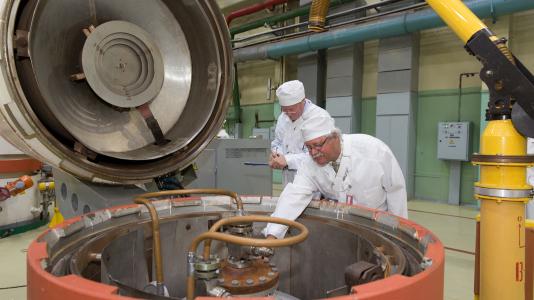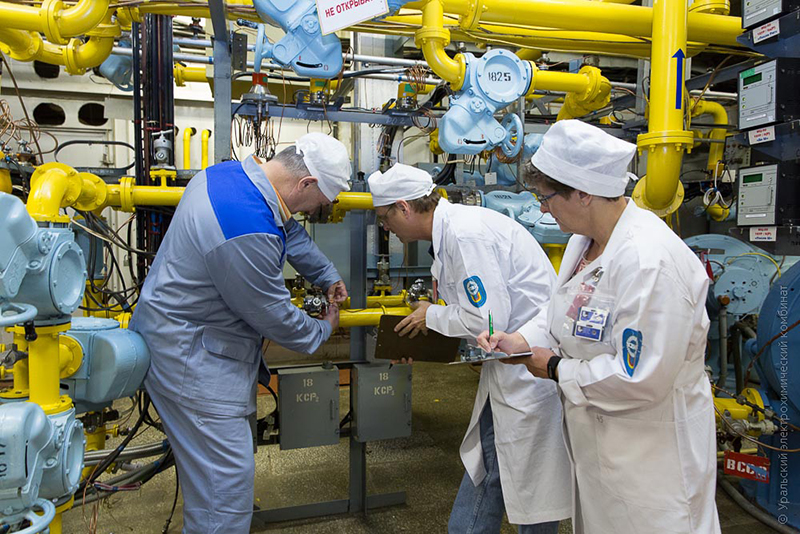
In fact, today 10% of American electricity comes from dismantled Russian warheads.
When the Soviet Union collapsed, the United States—concerned about the fate of the former Soviet stockpile—struck a deal with the Russian Federation. Under the terms of a 1993 agreement, U.S. nuclear experts monitor Russian plants as they “downblend” the uranium to a lower enrichment that can be burned in reactors in the U.S. and turned into electricity.
At the end of 2013, researchers at Argonne wrapped up their 15-year involvement in the 20-year agreement. Uranium from Russian warheads is currently the source of approximately half the nuclear fuel used annually in the United States.
Natural uranium straight from the mine contains less than 1% of an isotope called Uranium-235. You can “enrich” this natural uranium by adding more U-235 isotopes.
Nuclear warheads need it to be highly enriched (HEU, close to 90%), but commercial reactors like the ones in the U.S. run on low-enriched uranium (LEU, less than 5%). In order to get former warheads ready for commercial power reactors, then, scientists have to reduce the amount of U-235.
Dismantled Russian warheads are powering lights in America at this very moment.
This process begins deep in the Russian countryside, where Russian technical specialists carefully dismantle the warheads and extract the HEU. Engineers from Argonne and other national laboratories watch as this uranium metal is carefully burned to convert it into an oxide form. After it has cooled, the material is chemically cleaned and converted into uranium hexafluoride gas.
In gas form, the HEU is blended with very low LEU gas, resulting in a product that is less than 5% U-235. Next, the uranium goes into shipping containers; as it cools, it changes into a liquid and then into a solid. After it arrives at the Paducah Gaseous Diffusion Plant in Paducah, Kentucky, it is shipped onward to American companies that fabricate nuclear fuel for U.S. nuclear power plants—like the 11 Illinois nuclear reactors that generate most of Chicago’s electricity.
All the while, experts from Argonne, other national labs, and the National Nuclear Security Administration monitor the activities in Russia to make sure all the processes took place as agreed upon.
Argonne engineer Cynthia Boggs managed DOE’s Permanent Presence Office at one Russian facility. “We witness the processing of the uranium and conduct nondestructive assays to make sure the uranium is accounted for and all the steps went as planned,” she said. She and other DOE teams rotated in and out of Russia on one- or two-month shifts.
The program has been a resounding success. “When the program ends, we will have converted 500 metric tons of uranium,” Boggs said. 500 metric tons of HEU is equivalent to about 20,000 nuclear warheads.
Funding for this program was provided by the Department of Energy’s National Nuclear Security Administration.
This story was originally published in volume 8, issue 1 of Argonne Now, the laboratory’s semiannual science magazine.
DID YOU KNOW?
Nuclear energy provides about 20% of U.S. electricity—even more if you’re in a state like Illinois, which has 11 reactors.
